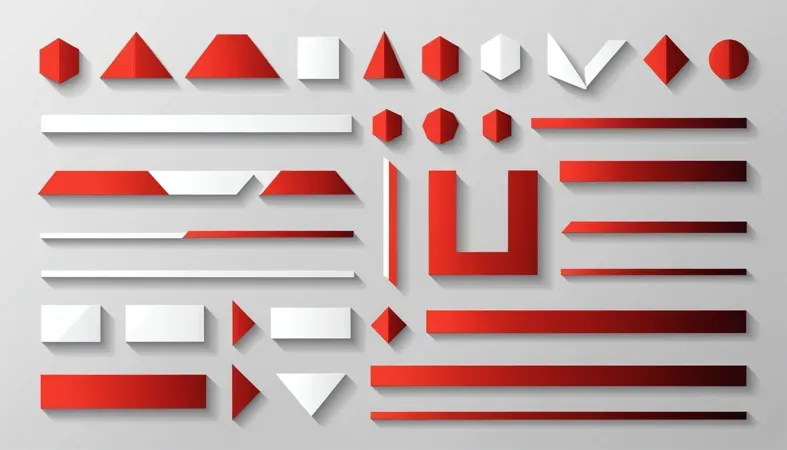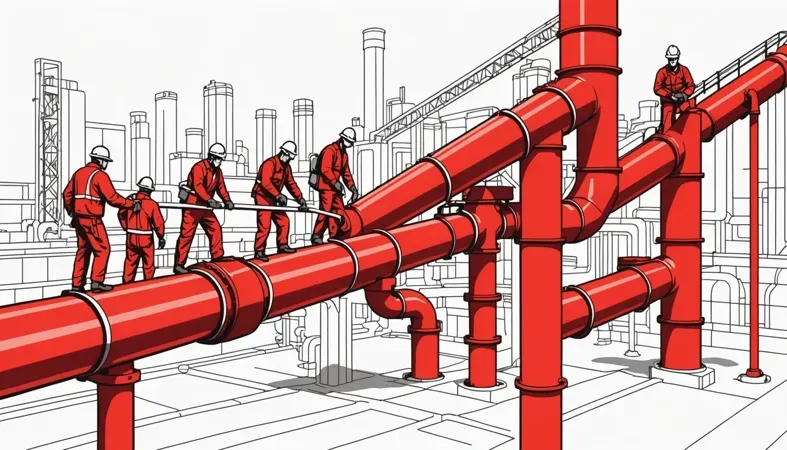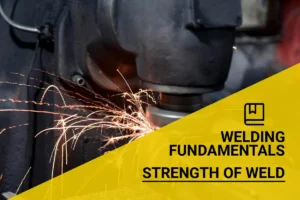What is a Bevel Weld? Learn About Types, Techniques, and Best Practices
Published on: May 27, 2025 | Last modified: March 4, 2025
By: Joe Carter
A bevel is an angled edge on a piece of metal. It helps fit two materials together, making welding easier and the joint stronger.
So, what is a bevel weld? It’s a type of joint created by welding two pieces of metal at a bevel angle. Following the correct bevel angle is crucial to ensure strong welds and prevent defects. I’ve seen many projects fail because the bevel wasn’t right, leading to weak joints that didn’t hold up under pressure.
In this guide, you’ll learn what is a bevel weld, how a bevel weld works, different types of bevels in welding, and the steps to create a bevel weld. We’ll also cover factors that influence bevel weld quality, typical problems to watch out for, aftercare and inspection tips, real-world uses for bevel welding, and even alternatives you might consider.
Contents
- What is a Bevel Weld?
- How Does a Bevel Weld Work?
- Types Of Bevels in Welding
- Steps to Creating a Bevel Weld
- Typical Problems to Be Aware Of
- Factors Influencing Bevel Weld Quality
- Aftercare, Inspection, and Advanced Tips for Bevel Welding
- Common Applications of Bevel Welds
- Alternatives That Might Work Better
- Frequently Asked Questions (FAQs)
- Conclusion
- Additional Reading
What is a Bevel Weld?
A bevel weld is a joint formed by beveling the edges of metal pieces. This ensures strong fusion for thicker materials. You’ll find bevel welds in structures, pipelines, and heavy machinery due to their excellent strength and fit.
When working with diverse welding methods, considering the advantages of DC inverter welding can enhance overall performance and efficiency in various applications.
How Does a Bevel Weld Work?
A bevel weld is a joint formed when two metal pieces meet at an angle. Typically, you bevel the edges at 30 to 45 degrees for deeper fusion. This method is crucial for thicker materials. Research shows that a well-executed bevel weld can enhance strength by up to 25% compared to a flat joint.
Bevels provide better penetration (Deep Fusion). The bevel angle affects weight distribution and the strength of the joint. If you get the angle right, you ensure a solid and durable connection.
If I were you, I’d pay close attention to the bevel angle in welding. Ensure it aligns with your project requirements. Knowing how to check the bevel angle can save you time and trouble later.
Types Of Bevels in Welding
Square Bevels
Square bevels create a clean, straight edge. They’re often used to join two pieces at a 90-degree angle. To make a square bevel, grind or cut the edge at a 45-degree angle. This setup helps create a strong weld joint, ideal for steel fabrication.
Single Bevels
Single bevels have one angled edge. They’re common in pipe welding. To achieve a single bevel, cut one side at an angle while keeping the other straight. This provides good access for the welding torch.
Double Bevels
Double bevels feature angled edges on both sides, allowing for stronger joints. This type is ideal for thick materials. To create a double bevel, cut both edges at 30 to 45 degrees for a precise fit that allows deeper weld penetration.
V-notch Bevels
V-notch bevels have a distinct V-shape on the joint edges. They’re great for thicker materials requiring uniform weld penetration. To form a V-notch, cut the edges to create a perfect angle, usually between 60 and 90 degrees, to focus the weld metal.
J-bevels
J-bevels have a curved edge, leading to a smooth weld finish. They help distribute heat evenly during welding. To achieve a J-bevel, grind the edge into a gentle curve, allowing the weld to effectively bridge the gap.
So far we covered various bevel types in welding. Next, let’s look at the process of creating a bevel weld.

Steps to Creating a Bevel Weld
Now, let’s cover the steps for making a bevel weld effectively.
Prepare the Joint
Start by aligning the pieces you want to weld. Inspect the fit closely. Ensure there’s no gap; gaps can weaken the joint. Aim for a tight fit for a strong weld.
Select the Proper Angle
Choose the bevel angle based on the thickness of the metal. A common angle is 45°, suitable for 5 mm (0.2 In) thick steel. For thicker materials, consider a larger bevel for better penetration. Find the right angle to ensure maximum strength.
Cut the Bevel
Use a cutting tool to create your bevel. An angle grinder is ideal; it provides a clean cut and is easy to control. Make the bevel smooth; an uneven edge can lead to a weak weld.
Clean the Surfaces
Remove any tarnish, oil, or dirt with a wire brush or grinder. Clean surfaces are vital; impurities weaken the weld. Aim for shiny metal! A clean joint ensures better fusion and minimizes defects. If you encounter imperfections or need alterations, explore effective methods for removing unwanted welds.
Perform the Welding
Set your welder to the appropriate settings. For instance, a 150 amp setting works well for thick metal. Move steadily along the joint; uneven speed causes poor penetration. Fill the bevel completely for strength. To further improve your welding technique, especially when dealing with different polarities, understanding what DCEP means in welding can be crucial.
We have now covered the steps to creating a bevel weld. Next, we will examine common issues to watch for.
Typical Problems to Be Aware Of
Let’s look at issues specific to the bevel in welding.
Inadequate Penetration
Inadequate penetration occurs when the bevel doesn’t allow enough fusion into the base material. Check for unsupported edges to identify this issue. Use a lower travel speed and increase heat to resolve it.
Excessive Welding Fumes
Excessive welding fumes can result from improper bevel angles. Adjust the bevel angle and ensure good ventilation while welding. Keeping angles within 30°-45° can help reduce fume production.
Warping Of Base Material
Bevels can warp due to uneven heating. Check for distortion with straightedges. To fix this, use controlled heat inputs or pre-warm your workpiece for even heat distribution.
Cracking in the Weld Area
Cracking near the bevel can result from improper metallurgical properties. Identify cracks as soon as they appear. Preheating and slow cooling can significantly reduce this risk.
Poor Aesthetic Appearance
Poor aesthetics in bevels can indicate a bad technique. Look for uneven bead profiles. Maintaining a consistent travel speed and proper bead size ensures a neat finish.
We’ve wrapped up common issues to be mindful of here. Next up, we’ll look at elements impacting bevel weld quality.
Factors Influencing Bevel Weld Quality
What factors affect the quality and effectiveness of bevel welding processes?
Material Thickness
Thicker materials require larger bevel angles, typically 30 to 45 degrees. The increased volume makes penetration critical for weld strength.
Welding Speed
Faster speeds can lead to insufficient heat buildup, causing poor fusion. Ideally, maintain a speed that balances efficiency and quality, around 5-10 inches per minute (12.7-25.4 Cm/min).
Heat Input
Pay attention to heat input, which should generally be between 1-3 kJ/mm. Too much can cause distortion; too little might not penetrate properly.
Joint Design
Quality bevels rely on proper joint design. A single-bevel joint requires more precision than a double bevel, affecting overall strength and quality.
Filler Material
The choice of filler metal greatly influences the weld characteristics. Choose compatible fillers to enhance strength, and verify their properties against the base metal specifications.
We have now covered the elements affecting bevel weld quality. Next, we will examine post-welding care, inspection, and advanced welding tips.
Aftercare, Inspection, and Advanced Tips for Bevel Welding
Here’s vital information on aftercare, inspection, and advanced techniques for your bevel work.
Aftercare Tips
After beveling, cool the weld slowly to avoid warping. Aim for a cooling rate of 580°F (304°C) per hour after the joint falls below 1,200°F (649°C). Use anti-spatter spray, like Weld-Aid, to keep the bevel clean. Regularly clean residual slag with a wire brush to ensure optimal adhesion for follow-up work.
Inspection Techniques
Inspect the bevel angle with a bevel protractor, aiming for a precision within ±1°. Check for undercuts or excess penetration using a hammer and chisel test; a solid bond should show no separation. In my experience, a flashlight helps spot inner flaws not visible under normal light.
Expert Tips
If it’s not your first time, focus on controlling heat input; stay under 1,000°F (538°C) for preheat temperatures. For comprehensive welding guidance, monitor travel speed at 20-30 inches per minute (50.8-76.2 Cm/min), depending on metal thickness. For pipe welding, maintain a consistent arc length of about 1/8 inch (3.2 Mm) to improve bead uniformity.
Understanding the difference between joint types, such as a complete joint penetration weld, can further enhance your welding proficiency.
.
Common Applications of Bevel Welds
Understanding where bevel welds are applied can help you appreciate their importance in various industries.
| Industry | Application | Material Types | Key Benefits |
|---|---|---|---|
| Construction | Joining steel beams for structural integrity | Steel, Aluminum | Enhanced strength and stability |
| Piping | Connecting pipelines in oil and gas | Carbon Steel, Stainless Steel | Leak-proof joints and durability |
| Aerospace | Fabricating aircraft components | Aluminum, Titanium | Lightweight structures with high strength |
| Shipbuilding | Attaching hull sections | High-strength Steel, Composite Materials | Resilience against harsh marine environments |
| Automotive | Building chassis and frames | Steel, Alloy Metals | Weight reduction with strong joints |

Alternatives That Might Work Better
There are a few options to consider if bevel welding isn’t your best route. For example, a fillet weld provides a strong joint without the need for beveling, and it’s quicker, too. You might prefer methods like using a J bevel or flare bevel weld, especially in tight spaces where working with angles is tricky. If you’re planning your material needs it helps to know how many 1/8″ 7018 rods are required in a pound.
Additionally, products like the Miller Multimatic 215 allow you to adjust settings quickly for different weld types. You can also check bevel angles easily with a digital protractor. They might save you time and material, all while ensuring you get the durability you need! Arc welding is foundational in various industries offering a robust joining method that enhances strength and efficiency. For more on this, explore the principles of arc welding techniques.
Frequently Asked Questions (FAQs)
Here are some questions I typically get asked.
What is a Bevel Weld Used for?
A bevel weld is used for joining two pieces of metal at an angle, usually when the pieces have a thickness of more than 6 mm (0.24 In). This joint is crucial for creating strong, durable connections, especially in structural applications where maximum strength is needed. Understanding the principles of welding machines can enhance your knowledge about how these welds are effectively formed using different techniques; you can explore more about how welding machines operate.
Is a Bevel Weld Stronger Than a Fillet Weld?
Yes, a bevel weld is generally stronger than a fillet weld. The design of a bevel weld allows for deeper penetration and better fusion between materials, maximizing load-bearing capacity and resistance to fatigue, which is vital in heavy-duty applications. If you’re setting up welding equipment, it’s crucial to understand how to set up a Lincoln Electric welder effectively to ensure optimal weld quality in your projects.
What is the Purpose Of a Bevel?
The purpose of a bevel is to prepare the edges of metal pieces for welding. A bevel enables better access for the welding arc and ensures that the weld fills the joint completely, enhancing the strength and integrity of the final weld.
How to Check Bevel Angle for Welding?
To check bevel angle for welding, use a protractor or bevel gauge. Accurate angles are essential for proper weld alignment and strength; typically, angles range from 30° to 45° for effective fusion of materials in various welding applications. In welding, understanding the formation of metal residue on the edges can be crucial, which is why it is important to know what is dross in welding.
What is the Difference Between V and Bevel Weld?
The difference between V and bevel weld lies in their shapes. A V weld features a pointed shape at the joint, while a bevel weld shows a flat preparation. V welds are often used for thicker materials to enhance penetration, while bevels can create larger areas of contact for fusion.
Conclusion
We’ve covered a lot about bevel welds. We discussed what a bevel weld is, how it works, types of bevels in welding, and the steps to create one. We also examined factors influencing bevel weld quality, typical problems, aftercare, inspection tips, real-world uses, and some alternatives.
So, what is a bevel weld? It’s a welding joint where two pieces of metal are joined at an angle. This type of weld allows better penetration and strength; typically, bevel angles range from 30 to 60 degrees (°) depending on the application, making it crucial for various projects in industries like construction and manufacturing.
If you want to delve deeper into related topics and enhance your welding knowledge, visit our homepage at What is Welding for more expert blogs and helpful resources.
Additional Reading
- American Welding Society. (2020). AWS Welding Handbook: Welding Science and Technology (Vol. 1). Miami, FL: AWS.
- Welding Institute (TWI): https://www.twi-global.com
Joe Carter is a retired welding professional with over 40 years of hands-on experience in the industry, spanning ship repair, structural welding, and even underwater projects. Joe is a master of MIG, TIG, and Stick welding. Passionate about mentoring the next generation of welders, Joe now shares his decades of expertise and practical insights to help others build rewarding careers in welding.
American Welding Society, Bevel Weld, Industrial Applications, Metal Fabrication, Pipe Welding, Weld Quality, Welding, Welding Equipment, Welding Techniques, Welding Types







